QuestionI have some experience with cats but the birthing process is fuzzy. The cat i have is pregnant and close she has a bloody discharge and is sleeping a lot her appetite is decreasing but hasn't stopped altogether she is an indoor out door cat .... i have no litter box for her because she goes outside like a dog and I'm concerned about litter usage and what to do here (i myself am expecting in 6-8 wks. a baby girl) I just want the cat to be ok can you help? she basically came with the apartment when we moved in and she has stayed since but this would be litter 2 since Feb. is that possible for her to have 2 litters back to back ? and what can i do to keep her more indoors as i will be doing my best to keep the litter itself indoors and safe from the toms. I do love the cat a lot but i cant change her but hopefully she will be willing to adapt a little bit to make sure her litter is safe
AnswerJennifer,
The average length of a domestic cat's pregnancy is between 60-68 days with the average gestation being about 63 days. Signs indicating that your queen is in labor include restlessness, pacing, panting, loss of appetite and looking for a place to have her babies, which is usually dry, dimly lit and difficult for people to get to. I'd recommend providing mom with a birthing box to avoid any unpleasant surprises like mom giving birth on your dirty laundry in the laundry basket. A good sized cardboard box works well, you can line it with the disposable blue absorbent pads that are often used to protect hospital linens from becoming saturated with blood or amniotic fluid when a woman goes into labor in a hospital or birthing center. You can generally find these pads in pharmacies, I usually buy them in bulk from Walmart's pharmacy or other drug stores in my area. These pads may not always be available at every pharmacy, if you aren't able to find these pads you can certainly use the pads marketed for puppy potty training, they're essentially the same with the exception that those pads are supposed to attract puppies to them when they need to eliminate and these pads tend to be more expensive. After placing one of these pads in mom's birthing/nursery box I'd suggest lining the box with old towels. The bedding should be checked 2-3 times daily to ensure that it's not wet or soiled, if this is the case then it's important to change the bedding as soon as possible since newborn kittens aren't able to maintain their own body temperature at birth (and for awhile after they come into the world) which means that if they get wet they could develop hypothermia which can be fatal. I usually don't use a heating pad or other heat source in my nursery boxes because I don't want to take the risk that one or more of the kittens will die as a result of becoming overheated. Generally if the temperature of the room the queen and her babies are living in isn't uncomfortably hot or exceptionally cold as a result of using an air conditioning unit that's set too high then mom and her kittens should be comfortable. If you want to provide a heating pad or hot water bottle for the kitten's it's very important that it's on the lowest setting. A heating pad used in a birth/nursery box should be covered with multiple thick towels so that the top layer is pleasantly lukewarm to minimize the risks to the kittens. Any heat source that you use must not take up the whole box, if it does the kittens can develop heat stroke so be sure that mom and her babies are able to get away from the heat source.
At this point it's quite possible that mom is getting ready to bring more babies into the world, especially if her kittens went to their adoptive homes before 10-12 weeks of age. Contrary to popular belief queens don't require human help to wean their babies, in most cases mom will wean her babies gradually with the process being complete within the first 9-10 weeks of their lives. Provided that mom doesn't have an exceptionally large litter of kittens (5+) and she's receiving appropriate nutrition there's no reason to interfere with the way that she raises her kittens. Although kittens can be separated from their mother permanently fairly early in life (5-9 weeks of age) it's really best to avoid premature weaning and separation from their littermates. Mom teaches her babies valuable skills in the first 10-12 weeks of life including:
- Kittens are tiny predators, their early weeks and months allow them to learn important lessons about getting ahold of their prey. Kittens are born with the basic instinct to hunt small birds and mammals, their mother teaches them to apply those instinctive urges practically and be able to put them to practical use. When a queen is teaching her babies to hunt effectively she breaks down the basic skills each kitten needs learn in order to be an excellent predator. Once the kittens have mastered one skill then mom will move on to another until her babies are able to put everything together, then these newly graduated predators will practice their newly acquired skills on each other by stalking, pouncing on and getting ahold of their siblings and mother. Most moms are fairly tolerant when it comes to indulging the kittens' hunting practice, but their does have limits and they will enforce them if necessary. If mom is a member of a feral/stray colony or she lives outdoors much of the time it's quite common for her to catch a mouse or bird and bring the live animal back for her babies to practice their hunting skills on (that's certainly something that you don't want to deal with in your house, you may not necessarily see that mom's bringing a critter indoors until she's let it go for the kittens).
- Another important skill that kittens learn from their mother is the ability to recognize feline body language and respond appropriately so that they don't find themselves in a fight that they aren't prepared for and couldn't possibly win when they're small.
- For the most part queens begin disciplining their kittens fairly early in life, that's the best way for these moms to set appropriate standards for the kittens when it comes to their conduct and the way that the babies interact with each other, their mother, other household pets and human caregivers. Most queens effectively communicate what constitues acceptable behavior and they don't hesitate to provide their kittens with instant feedback if they break the rules. Just like human parents each queen's style of discipline, basic rules and manners is different, some queens are more vocal, others will give their kittens a swat if they're out of hand. In the majority of cases it's extremely important not to interfere with the queen's discipline, when these feline moms swat their kittens, bite them and even bunny kick them (with hind feet while holding onto the kitten) things look much worse than they actually are, most moms are actually quite gentle when they discipline their kittens and they tailor the intensity of their response based on the intensity of the inappropriate behavior. A properly cared for queen also teaches her babies basic manners including when and where it's appropriate to use claws and teeth, how to properly interact with household pets and which behaviors are appropriate when interacting with people, of course mom's comfort levels with people play a big part in what she teaches her babies. In my experience most kittens catch on quickly to what their mother expects of them because moms usually set firm limits when it comes to the conduct they'll accept from their babies.
- Mom will even teach her babies when and where it's appropriate to use their claws and teeth. This means that if mom's been properly trained and she consistently uses a scratch pad, post or floor to ceiling cat tree she'll model appropriate behavior for her kittens who are quite likely to pick that basic skill up as well. When it comes to teaching kittens basic manners their mother really does know best, most queens are very effective teachers and role models for their babies, which means that the easiest way to have a well behaved kitten (who then grows into a well behaved adult cat) all we have to do is continue to follow mom's lead and in the majority of situations there shouldn't be any serious issues with inappropriate use of a kitten's claws or teeth.
- A kitten's first 8-12 weeks of life are crucial with regards to the way they interact with people in general. If a queen is fearful or anxious around people she'll pass that along to her kittens in most cases, for moms who have been physically/psychologically abused or seriously neglected they'll usually pass functioning in a constant state of fight or flight onto their babies. Another factor that will determine how comfortable kittens are interacting with people is proper handling and socialization. It's very important to provide kittens with frequent, consistent and gentle handling in the first 12 weeks of their lives so that they learn to associate human contact with positive experiences. In the first 3 1/2 - 4 weeks the kittens shouldn't be taken from their nest with mom for any longer than 5-15 minutes at a time because in those early days they spend the majority of time nursing and sleeping because they're growing quite rapidly which is hard work. As the kittens get older then you can spend more time handling them and I'd encourage you to introduce the kittens to people of all ages, shapes, sizes, colors and personality types if at all possible because this will familiarize them with people who smell, look, feel and sound different which usually turns out incredible kittens who are happy and confident in a variety of situations.
Based on the information you provided it's quite possible that mom is in the early stages of labor, however there could be other reasons for the changes in behavior and appetite. It sounds to me like you love your feline friend dearly, I really do think that you want the best for her in every way. I think that it would be wise to check and make sure that she hasn't already had her kittens somewhere in your home, some queens will have small amounts of bloody vaginal discharge for a few days after mom gives birth. If you haven't found kittens tucked away in a corner of your house and mom hasn't produced kittens by now then I really think that it would be best to take mom to the vet ASAP just in case something serious is going on. Your vet will perform a basic physical exam, if s/he feels kittens in the queen's womb then s/he may perform a vaginal exam to find out where mom's at in terms of going into labor and giving birth naturally. If the vet isn't sure whether your cat is carrying babies s/he may order an x-ray to determine whether or not mom is pregnant. It's safe to x-ray a pregnant queen and it's routinely done to determine roughly how far along mom is in the pregnancy, how many babies to expect and roughly when to expect them. Unborn kittens' skeletons show up on x-ray at a certain point in pregnancy (I think 52/53 days or so, but don't quote me on it)which allows the vet to estimate how big these babies are and whether or not s/he thinks that mom will be able to deliver them vaginally without complications.
Unfortunately loss of appetite, bloody vaginal discharge and increased fatigue aren't symptoms exclusively associated with pregnancy. Mom could potentially have something more serious going on such as a potentially fatal uterine infection called pyometra which causes the uterine horns to fill with pus and fluid. In some cases a kitty with pyometra will begin having vaginal discharge, sometimes there isn't any discharge at all - if the cat's womb ruptures spreading infection throughout the abdomen she would most likely die from internal bleeding, if that didn't kill her the raging infection in her abdomenal cavity most likely would. I do think that since mom seems to be acting differently than she normally does it's well worth having a vet take a look at her to determine whether or not there's any cause for concern, this would completely confirm whether mom's issues are related to pregnancy, a relatively simple viral or bacterial infection or something considerably more serious such as pyometra.
Since you suspect that this queen has become pregnant so soon after giving birth to her last litter of kittens it's quite possible that her body isn't reacting well to the strain and she could be having a miscarriage or experiencing preterm labor, this could be cause for serious concern in terms of mom's health and if the kittens are born too soon they may not be mature enough to survive outside of their mother's womb. If mom's been quite vocal and having obvious contractions where she is trying to push without producing a kitten within the hour then you should take the mom to the veterinarian as this could indicate that she isn't able to deliver the babies vaginally for one reason or another. Just like women some queens can have serious complications during pregnancy, labor and delivery so if you have any reason to suspect that moms' not 100% herself it's better to be safe than sorry - it's better to be wrong about a problem with everything going beautifully than to believe that everything's okay and be mistaken and have your kitty become seriously ill for one reason or another with dire consequences. For women every pregnancy, labor and delivery is different, that's certainly true in mother cats as well which means that there's a chance that something serious could go wrong endangering mom's life or the lives of her unborn kittens.
When it comes to keeping your queen and her babies safe inside I really believe that the best way to ensure that mom doesn't go outside her babies have the best possible start in life is to provide mom with a safe room of her own to use as a delivery room and nursery. A spare bedroom, your own bedroom or a large bathroom would be great, provided that you make sure to keep the food/water dishes away from the litter pans (this will minimize the chance that mom will seek out alternative places to relieve herself). Having mom set up in a room of her own will help to ensure that she doesn't make an escape to the outside world that Houdini would have been proud of. If mom stays in the house during the time that she's raising her babies then the kittens will benefit greatly because you've reduced the risk that mom could bring home a viral or bacterial infection, internal or external parasites or other things that would seriously compromise the health of mom and her new babies. Kittens are born with a very immature immune system, this means that they don't have the resources to fight off an infection and parasites could cause fatal blood loss in such tiny babies. Allowing mom to spend time outside also means that she's potentially going to get hit by a car, if that happens she may not survive or she may need to be kept in the hospital to recover, either of these scenarios would leave you to hand raise the kittens which is a time and labor intensive project that can become quite expensive. It's also worth noting that a female cat can mate and become pregnant again within 24-48 hours after giving birth to a litter of kittens, clearly it's not a good idea for this little girl to continue having babies back to back, especially considering how many unwanted cats and kittens are euthanized in shelters worldwide simply because they were unwanted and their time had run out. It's really not good for mom to have litter after litter of kittens back to back. Setting up a safe room for mom will work well as a means of keeping mom safely confined so that she doesn't accidentally get outside and get herself into any further trouble.
Being pregnant frequently along with nursing litter after litter of kittens takes a huge toll on mom's body. If mom isn't receiving ample amounts of the most nutritious food that you can provide for her then her system will steal vital nutrients from your queen's body to provide for her kittens. In situations where this happens there is a good chance that mom could potentially end up with nutritional deficiencies that could make her sick or even prove to be fatal if they aren't discovered in time. For more information about feline nutrition I'd strongly suggest that you check out a couple of informative websites. Dr. Lisa Pierson (a vet) created www.catinfo.org to address the unique nutritional needs of cats and other issues related to basic care and preventing behavioral issues. www.catnutrition.org deals specifically with feline nutrition. These folks really know what they're talking about and their format helps to show concerned pet parents what cats and kittens need in their diet and how their unique needs can be met with a species appropriate diet that's well beyond almost any commercially prepared cat food on the market. I really believe that these two websites provide information that allows pet parents to make good choices about their cat's nutrition and how to properly fulfill those needs with a simple, inexpensive recipe. Since the 2007 Menu Foods recalls almost claimed my eldest cat's life I've spent time doing my research so that I could feel comfortable with the foods I was putting into my cats' dishes. I was horrified at what I learned and there is an article that I can forward your way which puts the unpronounceable ingredients in your cat's food in simple terms. The two websites that I've recommended in this answer also help to dispel myths about feeding a raw meat based diet, these folks also answer most of the frequently asked questions and common concerns pet parents may have about feeding your cat a raw diet - another positive thing is that you can actually contact these folks via e-mail with any additional concerns. On both of these sites tips are offered to help make your cat's transition from highly addictive commercially prepared dry cat food that contains species inappropriate ingredients that cats can't digest and get their nutrition from such as animal by-products, vegetable protein, soy and grains. Sadly the pet food industry really doesn't have any stringent standards when it comes to providing high quality ingredients that actually can be used by the specific species that it was intended for. At the moment it would appear that the pet food industry is more concerned with making huge profits rather than providing high quality products that will allow our pets to live longer, healthier lives. www.catnutrition.org also has a link for a high quality, commercially produced raw cat food that can be shipped by courier in the US and Canada which is meant to arrive frozen, provided of course that you are there to receive the package from the courier, otherwise Feline's Pride takes no responsibility for food that arrives thawed or spoiled.
There is an incredibly serious pet overpopulation issue that affect shelters and rescue organizations. Unfortunately many animal loving staff working for animal welfare organizations are forced to euthanize healthy, adoptable animals simply because they don't have the time, space or resources to devote to each animal until their forever family comes along to adopt them. The euthanasia rate for cats tends to be much higher than that of dogs, this might be related to the fact that there are so many unwanted cats and kittens, though the overall euthanasia rates for cats is a much higher percentage than they are for dogs. The incredibly high numbers of cats and kittens admitted to shelters in North America (and I suspect worldwide# could possibly be an indication that cats are seen as disposable, another possible explanation is simply that pet parents aren't taking the important and simple step of controlling pet overpopulation humanely by spaying/neutering their cats before they reproduce.
Many folks are uncomfortable with the idea of spaying/neutering their pets which may be a direct result of not knowing what to expect before, during and after these routine surgeries. If you'd like I can send you detailed information about spay/neuter surgeries and I'll answer any questions or concerns you might have about spaying/neutering your cats or direct you to someone that can answer these questions if I don't know the answer. Loving and caring for our cats and providing them with the incredible gifts that go along with spaying/neutering them at an early age is an important part of humane, ethical pet parenthood.
There are many good behavioral and medical reasons to spay/neuter our cats. Cats that have been spayed/neutered are spared the pain and suffering that can happen as a result of developing uterine, ovarian or prostate cancers. The earlier in life that a cat is spayed/neutered the less likely s/he will be to develop prostate or breast cancers. Unspayed female cats are at risk of developing a potentially life threatening uterine infection called pyometra which causes the womb to fill with pus, if the uterus ruptures and spreads infection throughout the abdomen the cat's chances of survival are pretty low. The only treatment for pyometra is to perform an emergency spay, this procedure is much riskier than a routine spay because the cat is already quite sick which is associated with an increased risk of possible complications while the cat is under anesthesia as well as after she wakes up from her anesthesia. The emergency spay required to treat a cat with pyometra is more complicated and time consuming so it often quite a bit more expensive than a routine spay.
The leading cause of death in cats living in North America is euthanasia secondary to behavioral issues. This statistic is heart breaking because many behavioral issues can be prevented or minimized by spaying/neutering our cats. Common behavioral problems including inappropriate elimination (urinating or defecating outside of the litter box), fighting with other cats (the resulting injuries from cat fights often require medical care because bite wounds tend to get badly infected forming abscesses which must be drained under anesthetic, flushed with sterile saline and treated with antibiotics), queens howling to advertise their availability to mate, tom cats caterwauling and fighting to win the right to mate with receptive queens and wandering over a large area are all issues which can be prevented by having the cat spayed/neutered before they reach sexual maturity. Behaviors like house soiling or fighting can sometimes occur with cats that have been spayed/neutered however these behaviors are often related to things like improper introductions to new cats in the household, poor litter box hygiene, scented litter, and other issues which can be easily solved.
Ultimately spaying and neutering our cats is a responsible and ethical choice which saves countless lives each year. For pet parents that are having difficulty getting the money together for routine vet care I may be able to help find a solution to those issues. I keep an ever growing list of resources that may be willing to cover part or all of the cost of routine care like kitten vaccines and spay/neuter procedures. The only information that I ask for in these cases is that the pet parent provide the general area they are writing from - in Canada or the US the province or state is fine. Spaying and neutering helps cats to live longer, healthier lives and as kitty caregivers that love our pets we all want to have as much quality time as possible with our furry friends.

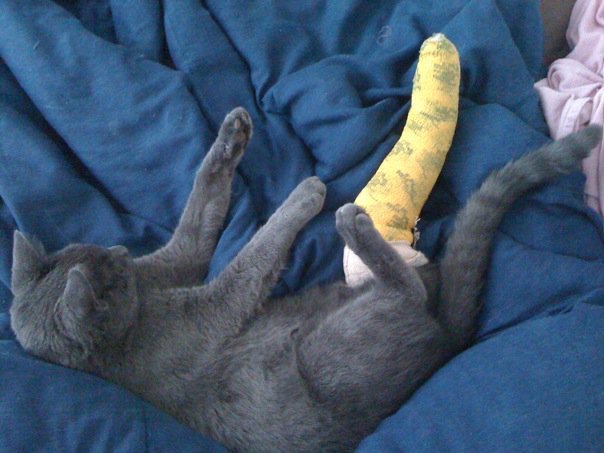 Cats broken leg and aggression
Question
Little Scout
Hello, I wanted to pose a query t
Cats broken leg and aggression
Question
Little Scout
Hello, I wanted to pose a query t
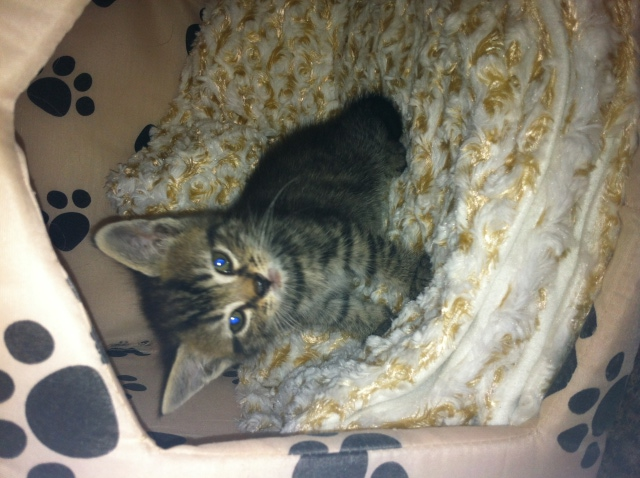 Bengal kitten?
Question
Pic Picture
Hello, I was wonderi
Bengal kitten?
Question
Pic Picture
Hello, I was wonderi
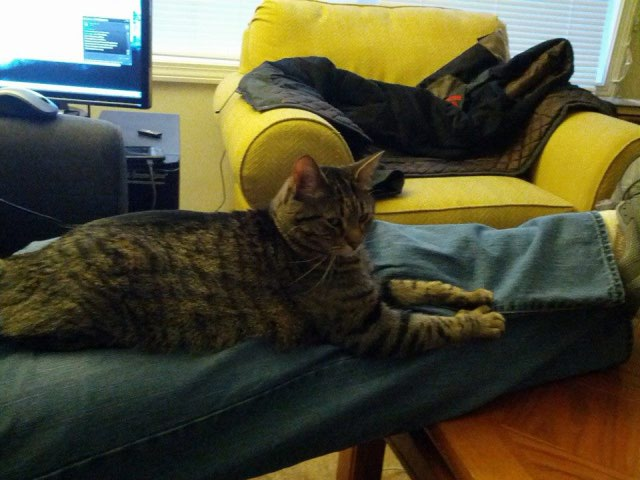 Chinese Li Hua?
Question
Magnus1
Hi,
My husband and I recently
Chinese Li Hua?
Question
Magnus1
Hi,
My husband and I recently
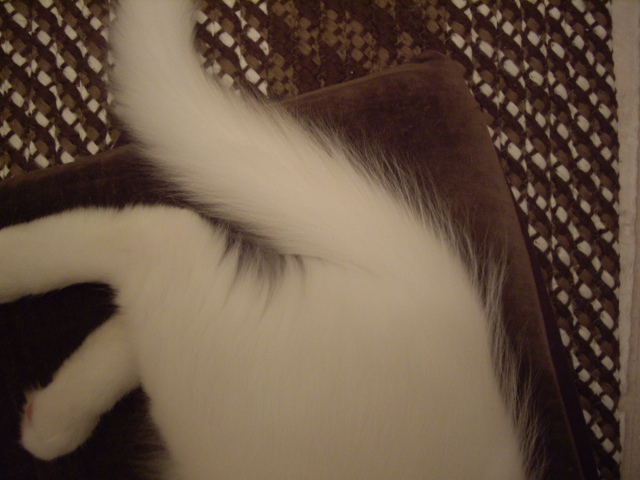 giardia coccidia
Questionthin, spiny guard hair
QUESTION: I took
giardia coccidia
Questionthin, spiny guard hair
QUESTION: I took
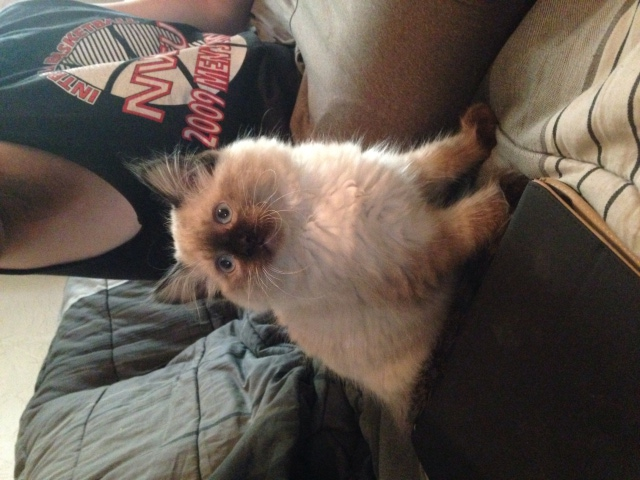 What kind of cat do I have? What should I breed her with?
Question
What kind?
The people we got my cat fro
What kind of cat do I have? What should I breed her with?
Question
What kind?
The people we got my cat fro